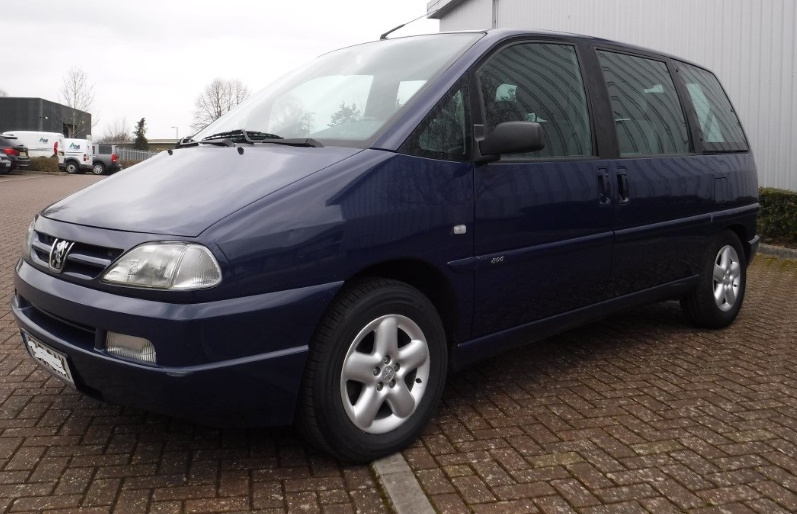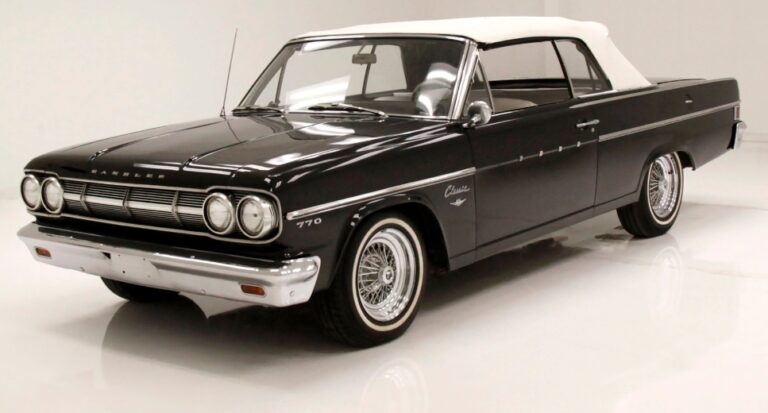The Evolution of Space: Charting the Journey of the Peugeot 806 and 807
In the annals of automotive history, few segments have captured the essence of family life quite like the full-size Multi-Purpose Vehicle (MPV). It was a class defined by practicality, space, and a certain unglamorous honesty. While Renault’s Espace is often credited with pioneering the European MPV, a formidable and innovative challenger emerged in the mid-1990s from an unlikely collaboration. This is the story of the Peugeot 806 and its successor, the 807—two generations of a vehicle that redefined family travel for millions.
The Genesis: The Eurovan Project and the Birth of the 806 (1994-2002)
By the early 1990s, the demand for versatile family haulers was undeniable. Recognizing the monumental cost of developing an entirely new platform, PSA Group (Peugeot and Citroën) and Fiat Group (Fiat and Lancia) forged a powerful alliance. Their joint venture, known as Sevel Nord (Société Européenne de Véhicules Légers), was established to create a shared platform for a new generation of MPVs and light commercial vehicles.
The fruit of this collaboration was the “Eurovan,” a single platform that would underpin four distinct-but-related MPVs: the Peugeot 806, Citroën Evasion (Synergie in the UK), Fiat Ulysse, and Lancia Zeta. Launched in 1994, the Peugeot 806 immediately stood out. Its design was a masterclass in packaging—a clean, one-box silhouette that maximized interior volume on a manageable footprint.
The 806’s defining feature, and its greatest advantage over the early Renault Espace, was its conventional steel body and, most importantly, its rear sliding doors. This was a game-changer for parents, making access in tight parking spaces incredibly easy and preventing children from carelessly swinging doors into adjacent cars. Inside, the 806 was a cavern of flexibility. It could seat up to eight passengers, with seats that could be folded, swiveled, or removed entirely to transform the vehicle from a people carrier into a veritable van. The dashboard was car-like and ergonomically sound, with a distinctive column-mounted gearshift that freed up floor space between the front seats.
Powertrains and Trim Levels of the Peugeot 806 (Phase 1: 1994-1998)
The initial 806 lineup offered a straightforward range of engines and trims designed to cater to different budgets and needs.
Petrol Engines:
1.8L 8-valve: A 99 bhp entry-level engine focused on economy.
2.0L 8-valve: The volume seller, producing a competent 121 bhp.
2.0L 16-valve: Introduced slightly later, boosting power to 132 bhp.
2.0L 8-valve Turbo CT: The range-topper, providing a robust 147 bhp and significantly more torque, making it ideal for heavy loads and towing.
Diesel Engines:
1.9L Turbo Diesel (TD): A workhorse engine producing 90 bhp, praised for its durability and fuel economy.
2.1L Turbo Diesel (TD): A larger, 12-valve unit with 109 bhp, offering better performance for motorway cruising.
Trim Levels (Market variations existed, but this represents the core European structure):
SL/LX: The entry point. It was functional, often with manual windows, basic cloth upholstery, and steel wheels. It provided the core 806 experience of space and practicality without the frills.
SR/GLX: The mid-range heartland. This trim added desirable features like electric front windows, central locking, plusher upholstery, and often body-coloured bumpers. Air conditioning became an option or standard on higher-spec SR models.
ST/SV/Executive: The top-tier models. These trims typically came with the more powerful 2.0L petrol or 2.1L TD engines. Features included alloy wheels, front fog lights, air conditioning, velour upholstery, and sometimes captain’s chairs for the front seats that could swivel 180 degrees to face the rear passengers.
The Facelift (Phase 2: 1998-2002)
In 1998, the 806 received a mid-life facelift to keep it fresh. The changes were primarily cosmetic but effective, featuring a new, smoother front grille with a larger Peugeot lion emblem, clear-lensed headlights, and revised rear light clusters. Inside, the materials and dashboard were subtly updated for a more modern feel.
The most significant evolution, however, was under the bonnet. The era of modern common-rail diesel had arrived, and Peugeot introduced its revolutionary HDi engine to the 806.
2.0L HDi 8-valve: This 109 bhp engine replaced both the 1.9L and 2.1L TD units. It was a revelation, offering superior refinement, lower emissions, better fuel economy, and a broad, flexible torque curve that made driving the large vehicle effortless.
The 806 also saw the introduction of popular special editions during this period, such as the Roland Garros model, featuring distinct green paintwork, alloy wheels, and a part-leather interior, and the youthful Quiksilver edition with its signature branding and silver accents.
After a successful eight-year run, production of the Peugeot 806 ceased in 2002. It had firmly established Peugeot as a key player in the MPV market and laid the groundwork for its more sophisticated successor.
A New Generation of Space: The Peugeot 807 (2002-2014)
As the new millennium dawned, customer expectations had evolved. Safety, technology, and style were now just as important as space. The second generation of the Eurovan project, launched in 2002, was a direct response to these demands. The Peugeot 807 arrived alongside its new siblings—the Citroën C8, the second-generation Fiat Ulysse, and the Lancia Phedra.
The 807 was a dramatic leap forward in design. The boxy utility of the 806 was replaced with a sleek, aerodynamic silhouette featuring large, stylized headlamps that echoed Peugeot’s contemporary design language seen on the 206 and 307. It was bigger in every dimension, resulting in an even more palatial interior.
The standout innovation was the introduction of electric sliding rear doors. Operable via the key fob, dashboard buttons, or door handles, they were a premium feature that made family life significantly easier. The interior was completely redesigned with a futuristic, centrally-mounted digital dashboard, freeing up the driver’s direct line of sight. The quality of materials was vastly improved, and the seating system became even more versatile, though the seats remained heavy to remove. Safety was paramount, with the 807 earning a five-star Euro NCAP crash test rating, a critical selling point for family buyers.
Powertrains and Trim Levels of the Peugeot 807
The 807 offered a more powerful and refined range of engines, with a clear emphasis on smooth diesel power and, for the first time, a flagship V6 petrol engine.
Petrol Engines:
2.0L 16-valve: Produced 136 bhp, serving as the capable entry-level unit.
2.2L 16-valve: Offered a healthier 158 bhp for improved performance.
3.0L V6 24-valve: The pinnacle of the range. This 204 bhp engine, paired exclusively with an automatic transmission, transformed the 807 into a smooth, powerful, and luxurious long-distance cruiser.
Diesel Engines (all HDi with FAP Particulate Filters):
2.0L HDi 16-valve: Available in various states of tune throughout its life, starting at 107 bhp and later offered with 120 bhp and 136 bhp. This was the workhorse of the range.
2.2L HDi 16-valve: Initially producing 128 bhp, it was known for its excellent torque.
A later, more advanced twin-turbo version produced an impressive 170 bhp, providing V6-like performance with diesel economy.
Trim Levels (Evolved over its long lifespan, but the main hierarchy was):
S / LX: The base model. It included essentials like ABS, multiple airbags, and remote central locking, but often had manual air conditioning and steel wheels. The electric sliding doors were typically not standard.
SE / SL / GLX: This popular mid-range trim was the sweet spot. It usually added automatic climate control, alloy wheels, cruise control, roof rails, and crucially, the electric sliding doors as standard.
Executive / SV: The luxury-focused top trim. This model was lavishly equipped with features like leather upholstery, satellite navigation, heated front seats, Xenon headlights, and parking sensors. It was often paired with the larger 2.2L HDi or the 3.0L V6 engines.
The 807 received a very minor facelift in 2008, with subtle updates to the grille, a larger lion badge, and revised interior trim colours, but its fundamental design remained unchanged throughout its 12-year production run.
.
NO MORE dead batteries with this:

.
The End of an Era and Legacy
By the early 2010s, the automotive landscape had shifted dramatically. The rise of the seven-seat SUV and the popularity of more compact, car-like MPVs began to erode the market for large, van-based people carriers. Sales of the 807 and its siblings slowed to a trickle, and production finally ended in 2014 without a direct successor.
The role of the large family hauler in Peugeot’s lineup was fragmented. The more stylish and SUV-like 5008 took over as the primary seven-seater for families, while the van-derived Peugeot Traveller offered even more space for larger families and commercial shuttle services.
The story of the Peugeot 806 and 807 is a perfect reflection of the evolution of the European family car. The 806 was a product of its time—a brilliantly practical and no-nonsense tool born from a clever industrial partnership. The 807 built on that foundation, adding layers of style, technology, safety, and luxury to meet the demands of a new century. Together, they represent a two-decade journey that put millions of families on the road, their cavernous interiors filled with the noise, laughter, and memories of everyday life. They were, in the truest sense, the unsung heroes of the family adventure.







